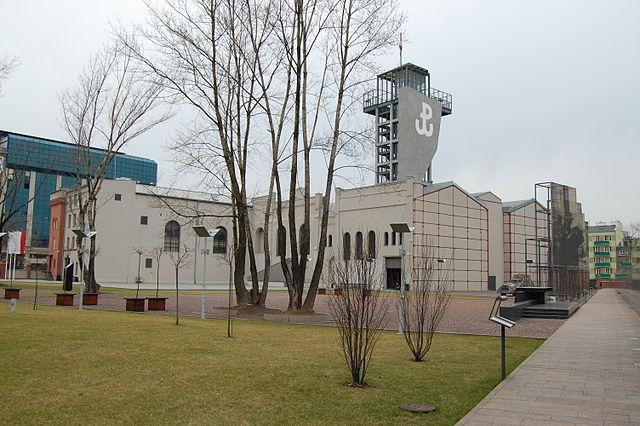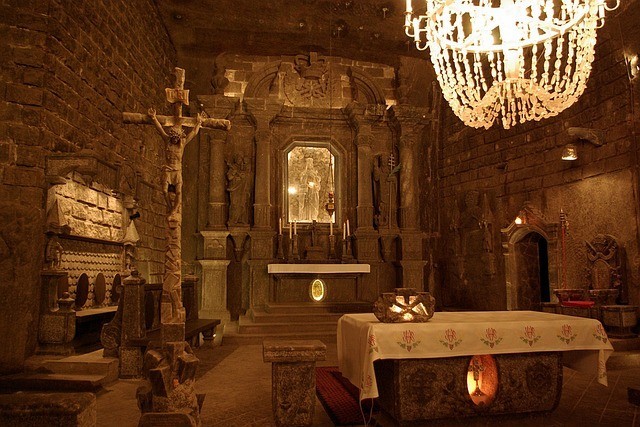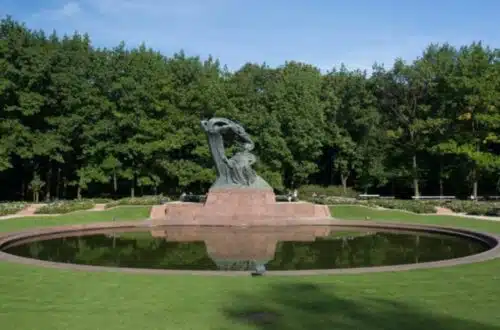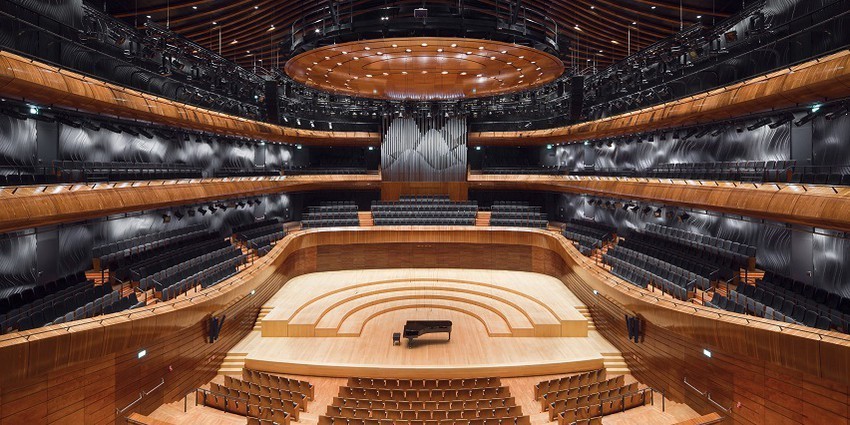How To Spend 48 Hours in Gdansk
When it comes to planning a city break in Poland, Gdansk may not come to mind, but this lovely city is in a league of its own. It is one of Poland’s most culturally and historically significant cities. Though it may not be as popular as Krakow in terms of the number of visitors, it is an ideal destination for an unforgettable weekend getaway.
Popularly known as Polish Amsterdam, Gdansk has its name engraved in the history books. The first gunshot that signaled the beginning of the Second World War was fired just 20 minutes north of the city’s downtown. Not only that, the Solidarity movement that eventually saw the end of eastern-bloc communism started here as well.
The city’s location on the Baltic coast makes it a popular seaside town for beach lovers and young Poles who are keen to live by the sea. Plus, Gdansk has some of the best art galleries and art houses in Poland. All these and many more make this city a special place.
Do not be deceived by the city’s small size. Exploring the city’s major attractions within 48 hours might look easy, but if you want to experience all that Gdansk has to offer, you may need to spend five to six days touring the city. Don’t fret if you don’t have much time up your sleeve: with this itinerary, you can get the most out of your 48 hours in Gdansk.
Day 1
Explore the Historic Old Town
After breakfast, your morning tour should start from the Old Town. Though small and compact, the Old Town has some of the most stunning attractions in the city, making it the busiest part of Gdansk.
If you stay within or near the city center, you don’t need to figure out how to use public transportation. The Old town can be explored on foot as most attractions are located within walking distance from each other.
Each building has its own unique story to tell, from the medieval façade to the historic Golden Gate and beautiful statues remolded after the end of WWII. A stroll around the Old Town is a must-do activity for all.
So, what is there to see in Old Town?
Royal Route
The center of the action starts at Dlugi Targ, also known as the Royal Route, which spans Gdansk’s entire old town. The Royal Way was the path taken by Kings and, in present-day, serves as the route for city ceremonies and parades.
You can cover the length of this thoroughfare within 10 minutes, but the many sites along the way are the major highlights. Top Gdansk attractions you’ll find on your way include the Golden Gate, Neptune Fountain, Green Gate, St. Mary’s Church, and many more.
Check out the attractions to see in details:
Wieza Wiezienna literally meaning the Prison Tower and Torture Chamber dates back to the 14th century. Here you’ll find the Amber museum.
Next up is the Golden Gate – your gateway to the most popular street in Gdansk, Ulica Dluga. On the gates are eight figures which stand for Peace, Freedom, Agreement, Prudency, Fame, Wealth, Piety and Justice.
Long Street, the main thoroughfare of Gdansk, is where the action lies. The street boasts lots of photogenic and colorfully designed facades. One of Gdansk’s outstanding features is its tall, slender facades, but the most captivating of these buildings are located on Long Street.
There’s no shortage of things to see and do here. The many cafes, bars, and restaurants located here keep your stomach full and reenergized for the day’s exploration. In the summer, tourists stroll along the street with an ice cream cone in one hand.
Check out the Town Hall. Built-in the 14th century, the Town Hall is home to the Gdansk History Museum, ideal for those who would like to learn more about the city’s history. What’s more, visitors can catch scenic views of the Old Town by climbing to the top of the Town Hall Bell Tower.
Other attractions along the way include Long Market, Neptune Fountain, Green Gate, and Artus Court.
The Old Town is, without a doubt, the perfect place to begin your Gdansk tour. The Old Town has a great character, making it a top place to explore no matter the time of the year.
St Mary’s Basilica
Located north of City Hall, the iconic St Mary’s Basilica prides itself on being among the world’s largest brick churches. Dating back to the 14th century, the church has 25,000 seating capacity. The white interior features a few paintings and decorations. Inside the church, you’ll find the 15th century Gdansk Astronomical Clock. Another reason for its popularity is its viewing platform. Climb 400 stairs to the top of the tower – the tallest in the city – for a scenic view of Gdansk.
Zuraw Crane
The crane has been in existence since the 14th century. At a time, it ranked as the world’s biggest crane. The crane was quite helpful and useful in ensuring the port functioned optimally. It was used to load and unload goods on and from ships. It was impacted during the Second World War but was later reconstructed. Today, it formed a major part of the Maritime Museum. Zuraw Crane is one of the most popular things to see in Gdansk.
Day 2
Set the second day aside to delve deep into the history of the city. Explore its museums and don’t miss shopping on Mariacka Street
Museum of the Second World War
Start the day at the Museum of the Second World War. Visit in the early hours of the day to have the museum to yourself before it gets crowded during the day. Flawlessly integrating artifacts, interactive technological displays, and immersive environments, the museum is the second most popular attraction after Gdansk’s Old Town. And if you have just a slot for museums in your itinerary, this should be the one.
Opened in 2017, the museum features exhibits that tell stories about WWII. The museum is divided into three sections, which guide visitors through the pre-war periods (The Road to the War), the events of the war itself (The Horror of the War), and the post-war era (The Long Shadow of the War). Exploring these exhibits educate visitors on the war’s awful impact on the city. If you’re history lover, consider taking a tour of Museum to explore its highlights. This museum will never disappoint.
European Solidarity Museum
Solidarity is a Polish trade union movement that formed in 1980, seeking a favorable working condition for its members at the Lenin Shipyards. Renowned for being the first labor union in the Soviet-bloc, the movement brought an end to communism in the late 1980s. The museum features exhibit documents how the Solidarity movement all started and its impact on the country at large.
Take a walk through the museum, choose events you’d like to read about and watch the accompanying multimedia displays. Though the museum is relatively new, it gives an account of the region’s history. One of the major highlights of the museum is the Monument of the Fallen Shipyard Workers of 1970, built in honor of the over 40 people who died in 1970.
Go Amber Shopping on Mariacka Street
While pictures are great when it comes to travel memories, you can never go wrong with souvenirs. Mariakca Street in the heart of the city still maintains its old-world feel, thanks in part to the pre-Second World War terraces found here.
Amber can be found everywhere in Gdansk; hence it’s part of the city’s heritage. This handcrafted, locally made jewelry is a beauty to behold. Today, the street is lined with lots of artisan shops selling amber jewelry. If you love shopping, this is the place to be.
Evening Stroll along the Motlawa River
Since it’s going to be your last day in Gdansk, then you should make the most of it by taking in the city’s raw beauty from the time of old. One way to do this is to take a leisure stroll among the Motlawa River. For the best views, take a walk along the riverside.
From here, you can see the Zuraw Crane, one of the largest cranes in the world. As the sunset and the night lights brighten the sky, you can watch the lights as it reflects in the still water. You can also take a boat tour along the river. The Motlawa River is a great place to see some of the historic buildings in the city.
Travel Tips
- In Gdansk and most parts of Poland, locals can communicate in English fluently.
- The best time to visit Gdansk is between May and October when the weather is at its finest
- Gdansk boasts an efficient public transport system. However, the city can be explored on foot. Hiring a car is recommended if you want to explore the surrounding coastline. Otherwise, you’re better off without one.
- For the best views, climb to the top of St Mary’s Church tower and the Solidarity museum’s deck.
The Best Travel Resources
Booking.com – very good global booking engine, they have a very comprehensive database of locations and hotels to choose from.
HotelsCombined – hotel booking site focused on finding you the best variety of rates. Save you time by looking at hundreds of providers.
Get Your Guide – great platform to book endless
activities, tours and tickets for attractions across the world.
Discovercars.com – price comparison and bookings website for cars, at very affordable prices, one of the best on the market.
Omio – great platform for booking trains, buses and flights in Europe.






